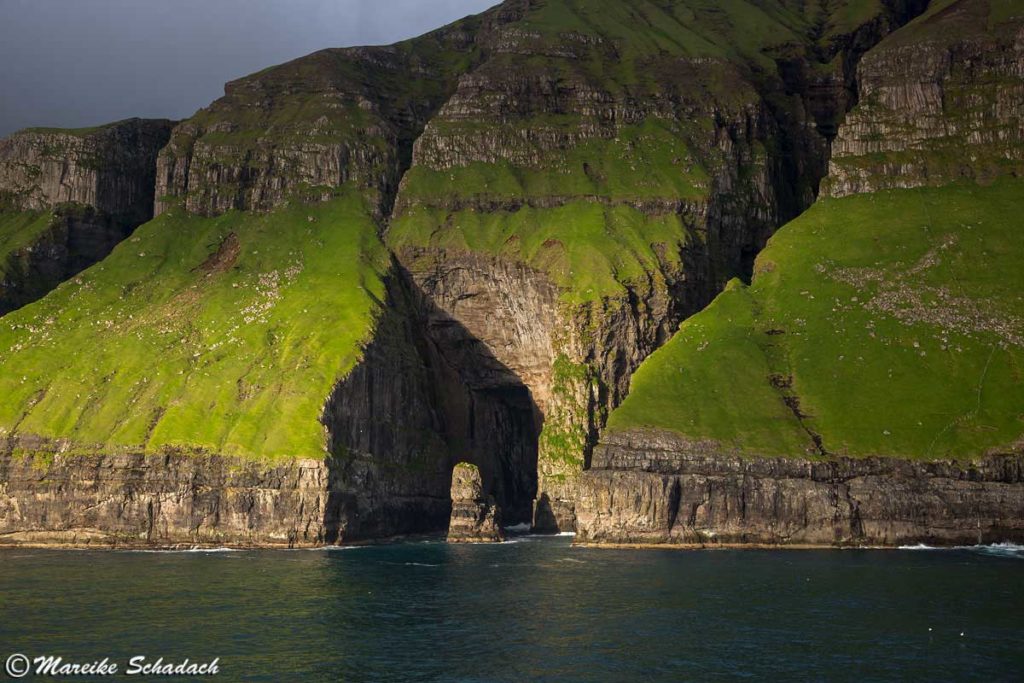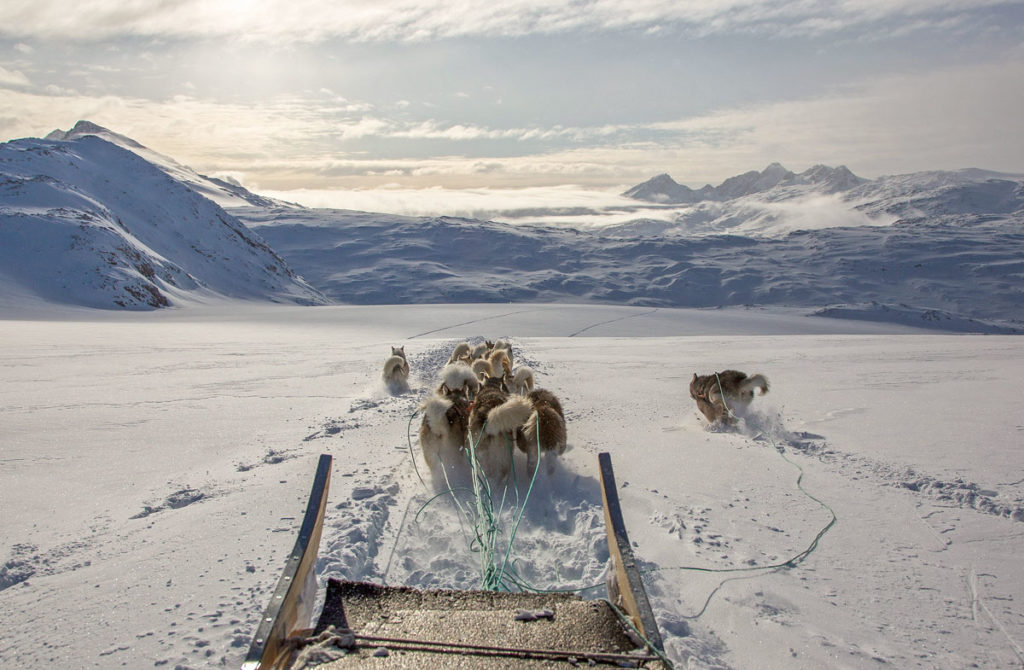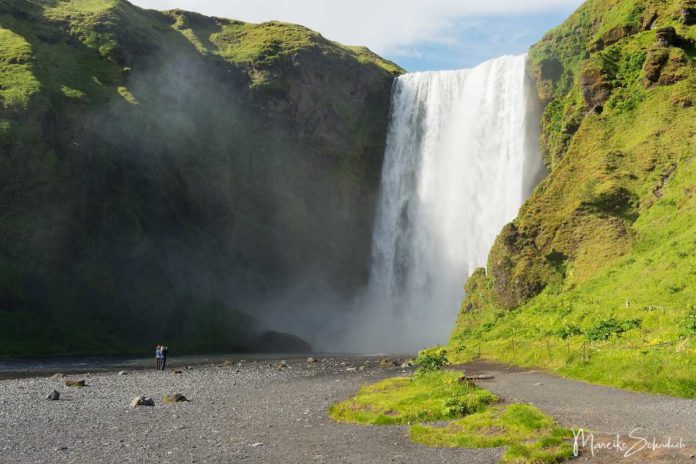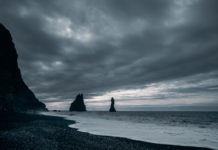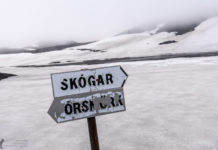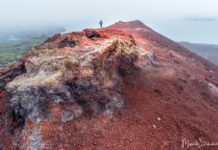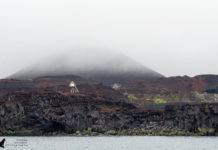Waterfalls are one of the most popular sights in Iceland. And rightly so. They are always impressive. I could watch for hours as the water rushes down and little rainbows appear in the clouds of spray. Here I tell you about the Skógafoss, one of the most beautiful waterfalls in Iceland. How was it created? What is there to see? What's the treasure chest all about?
Unassigned, unpaid advertising. The article contains affiliate links.
The Skógafoss Waterfall in the South of Iceland
If you drive along the ring road in the south of Iceland, you will pass numerous waterfalls. The Skógafoss is one of them. It is about 62 meters high and 25 meters wide. To the left of the waterfall a narrow staircase leads up to the edge of the Skógafoss. Up here you are very close to the water, which shortly after falls down thunderously. Impressive! But it is even more impressive down below, where the waterfall thunders on the ground and the spray clouds everything. When the sun is shining, you can see a rainbow in the spray of the Skógafoss down here. But be prepared for a shower, you'll definitely get wet here!
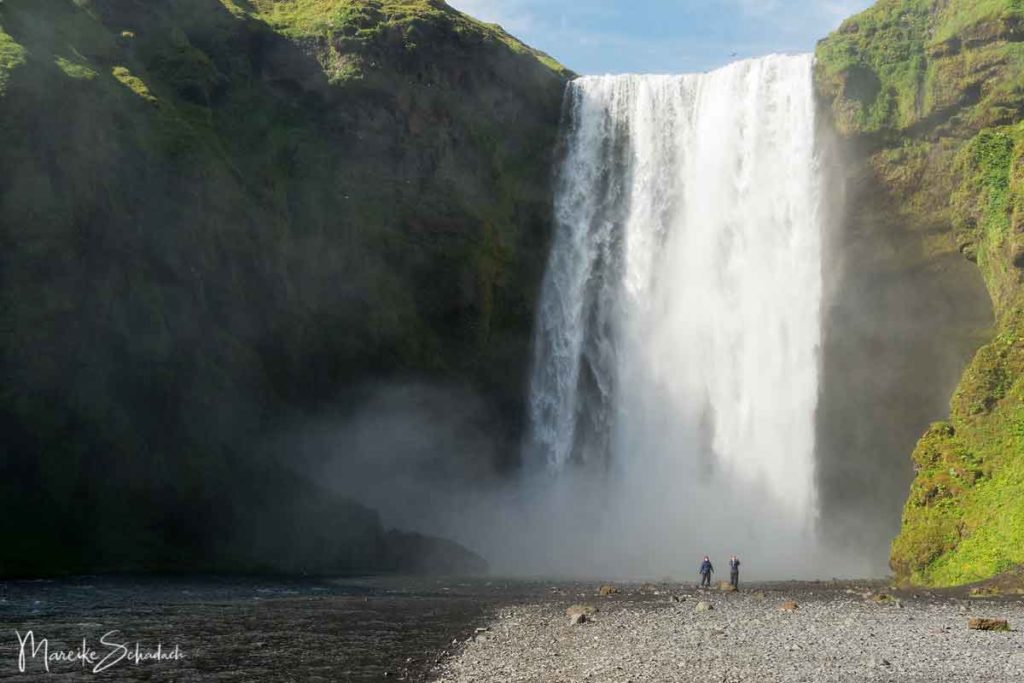
The name Skógafoss means translated as forest waterfall. Well, the name must be very old - there was not much forest left here.
Where is the Waterfall Skógafoss?
The waterfall Skógafoss is located below the Eyjafjallajökull at the river Skógá in southern Iceland. It can be reached from Reykjavik, 155 kilometres away, via the ring road in about 2 hours. In the village of Skógar there is a restaurant, a minimarket, a very nice museum, various accommodations and a camping site.
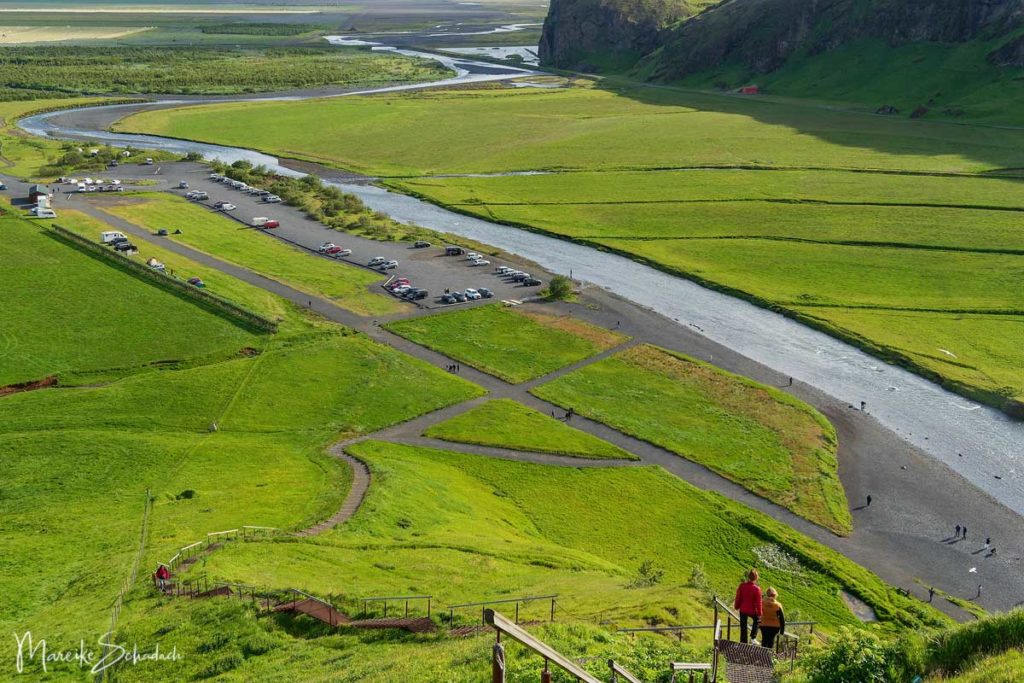
Waterfalls at the former Coastline of Iceland
The south coast of Iceland has a very special character. It is characterized by a flat lowland on one side and a long steep drop off on the other side. This drop off from the highlands towards the sea is the former coastline and stretches from the village of Selfoss to Höfn.
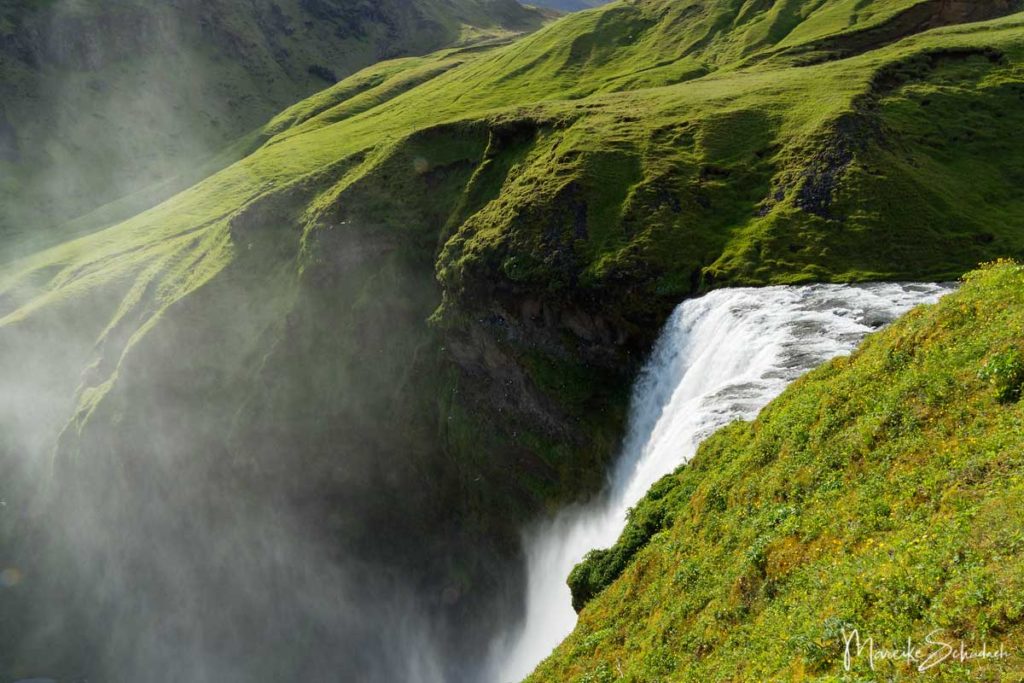
During the warm periods of the last 2 million years the sea level was much higher than today. Here in the south of Iceland the sea met a steep coast, at the foot of which a swell platform was located in about 100-130 meters water depth. At the end of the Ice Age, the meltwater rivers washed enormous amounts of sand and scree towards the sea. The material was deposited on the swell platforms, creating sand areas several kilometres wide and 50 - 100 metres thick.
After the coastline had shifted to the south, a steep cliff over hundreds of kilometres remained from the Icelandic highlands towards the sea. All the rivers that flow from the glaciers towards the sea have since been falling down the former steep coast in majestic waterfalls.
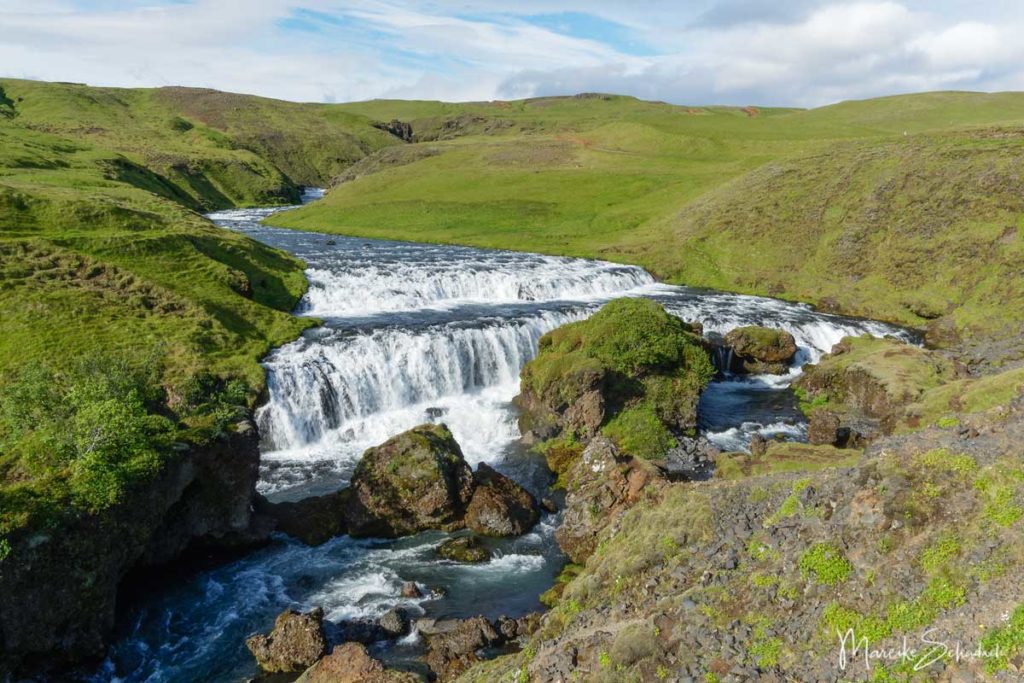
The Legend of the Treasure Chest at Skógafoss
And since we are here in Iceland, the Skógafoss naturally also has a legend. This legend dates back to 900 A.D. and says that a treasure chest is hidden in a cave behind the waterfall. The Viking Þrasi Þórólfsson, one of the first settlers in the area, is said to have hidden it here shortly before his death. According to legend, in ancient times you could even see one side of the chest protruding from the waterfall. Of course, attempts were made to recover the chest. It was even possible to grab a golden ring on the side of the chest. But it broke off and the chest with the treasures was lost forever. The ring was given to the church and can be seen today in the Skógar Museum.
Skógasafn - regional Museum with Turf Houses
Beside the waterfall it is also worth visiting the regional museum Skógasafn. The museum was opened in 1949, but was initially located in a classroom of the school. Since then it has grown enormously. Today it houses about 18,000 collected artifacts from the region, including old side saddles for Icelandic horses, national costumes or knitted insoles for shoes. In the open air area you can see reconstructed old wooden houses and turf houses. The Museum of Transport is also part of the Regional Museum. It shows old cars, boats and small planes. In front of the museum entrance you can see for example a great red Land Rover from the fire brigade.

The reconstructed houses include the Skógar Church. Its exterior is from 1998 and thus quite young, but the interior and the furnishings come from various churches from the 17th to 18th century.
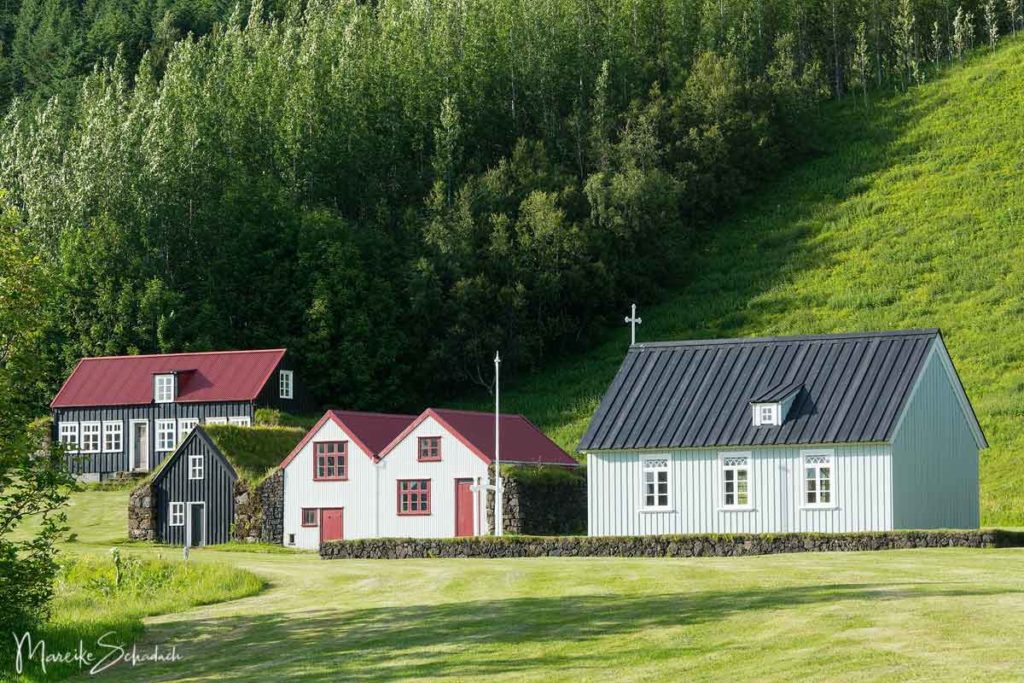
The museum is open all year round:
May and September: 10am-5pm
June, July, August: 9am-6:30pm
October to April: 11am-4pm
Hiking along the River Skógá
Skógafoss Waterfall is the starting point - or end point - of the famous hiking trail over the Fimmvörðuháls Pass to Thorsmörk (Þórsmörk). On the east side of Skógafoss there are stairs leading up to the head of the waterfall. After that the path is well developed at first and leads you along the river Skógá, where several more waterfalls can be seen. I have only walked the path a little bit. Many hikers hang this about 27 km long hike over the Fimmvörðuháls pass as an extension to the long-distance hiking trail Laugavegur.

Camping at the Skógafoss
Directly in front of the Skógafoss there is a simple campsite. Here you can pitch your tent so that you can look out of your sleeping bag to the waterfall. If it is windy, there is a tent meadow south of the parking lot with some bushes as wind protection.
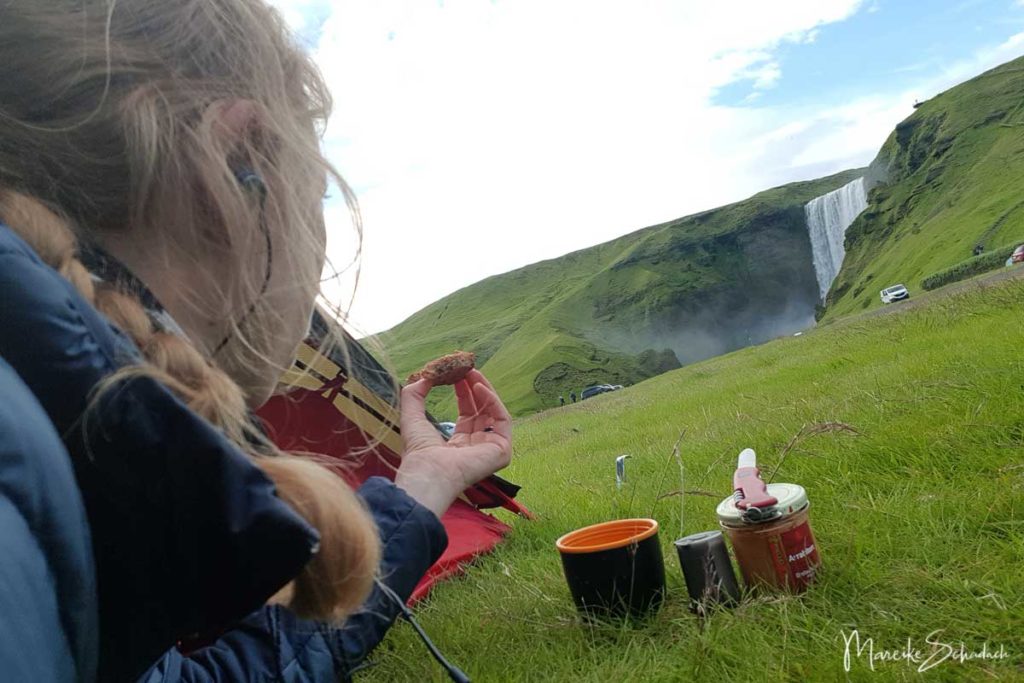

Tip: Don't pitch your tent too close to the waterfall, because it is very loud.
Costs per person 1500 ISK (about 9,40 Euro) per night. The reception is only a small window, which is open in the evening hours.
Book Recommendations for Iceland
Do you want to know where the journey is going? Then I can recommend this travel guides* to you.
You can order the travel guides on Amazon by clicking on the pictures. If you buy a product via an affiliate link, I get a small commission and you help me to keep filling Fernweh-Motive with interesting articles. This does not make the product more expensive for you.
Did you like my article about the Skógafoss? Then follow me on Facebook, Pinterest or Instagram. I would also be very happy if you share my article with your friends. Do you have any questions or suggestions? If so, please write me a comment!
Recommendations for further Reading
Do you love the Scandinavian countries as much as I do? Then you might also be interested in my articles about the Faroe Islands or a tour on a Dog Sled from Tasiilaq to Tiniteqilaaq in East Greenland.
